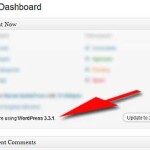For those of you using WordPress, you may be aware of the thousands of Plugins available to make your website do just about anything you can imagine. WordPress plugins are actually php code that modifies or adds to, WordPress. While this is a very strong feature, adding a plugin that is not compatible with your installation of WordPress can be catastrophic. By catastrophic, I mean it can, in a worst case scenario, completely ruin your site.
Don’t let this scare you; with a bit of care and some understanding, you can use this powerful feature to make WordPress do much more.
Where do you find WordPress plugins? How do you install them into your WordPress site? Keep on reading…
Probably the most used source of WordPress plugins is here. The plugins listed are all free of charge. You can search for a plugin based on what you want it to do for you, or search using any word that you think may help find your solution. For instance, say I would like a plugin to add social media buttons and links to my site posts and/or pages. I typed in “Social media buttons” in the search field and quite a large number of plugins were displayed. Next, I tried just entering “Facebook” into the search field. Again, loads of plugins were suggested, over 125 pages of them!
How do you choose? WordPress.org gives you the tools
After the description of the plugin, there are a few important pieces of information that will help you choose the one that will do what you wish. A version number is first, really not that much help. Next, the date the plugin was last updated is listed. Why is this important? WordPress is updated on a frequent basis, if a plugin author does not update the plugin, it may not be compatible with the latest version of WordPress.
After the date, the number of times the plugin has been downloaded is displayed. Then a rating of one to five stars. These are an indication of the popularity of a plugin, but not a guarantee.
From the hundreds of listed plugins, I choose “Slick Social Share Buttons” and clicked on the link. The resulting page offers much more information about the plugin. The first place on the page you should look at is the version of WordPress the plugin requires. In this case, it is version 3.0 or higher. It also states that it is compatible up to version 3.3.2. A bit down the right side shows another compatibility rating by those who have tried the plugin.
OK, how do you know what version of WordPress (WP) you are using?
When you login to your site, you are taken to the dashboard. If you have not made any changes to the way the info is presented, your version of WP is displayed at the bottom of the “Right Now” block. In some installations of WP, clicking the W on the dashboard page will show the version.
At the top of the Dashboard page is usually a display stating that a newer version of WP is available and a link to “Please update now”. Hold on there, don’t update without some serious thought. Some themes are not compatible with a newer version of WP; some currently installed plugins may not be compatible as well. You need to check all of the versions and how they work with one another before you add a new plugin.
I know this is not easy; momma never said life would be easy. Hang in there.
Back to our plugin, “Slick Social Share Buttons”; there is much to read about this plugin, as is the case with most others. Take the time to go over all of the material. It will help you decide if this is the one you want. Often there will be a link to the plugin author’s website that will give even more information. These links are usually in the description or the FAQ sections. This plugin even gives a link for a demo.
So, I decide that I want to add this plugin to my site, what’s next?





 Austrian Hall
Austrian Hall
 Blue Pagoda
Blue Pagoda Burns Photography by Roger Kerekes
Burns Photography by Roger Kerekes Daisytown Sportsmens Club
Daisytown Sportsmens Club Friends of Oscar Scherer Park
Friends of Oscar Scherer Park Friends of Sarasota County Parks
Friends of Sarasota County Parks Ink Drawings
Ink Drawings K and K Livestock
K and K Livestock Le Dance Academie'
Le Dance Academie' Microtek Systems
Microtek Systems Moms Remembered
Moms Remembered New Floridians
New Floridians Ontrax Home Watch
Ontrax Home Watch Project Critter Nature Club
Project Critter Nature Club Rink of Dreams
Rink of Dreams Royal Air Conditioning & Heating
Royal Air Conditioning & Heating Sarasota British Club
Sarasota British Club Waste Generated Products
Waste Generated Products West Water Street
West Water Street